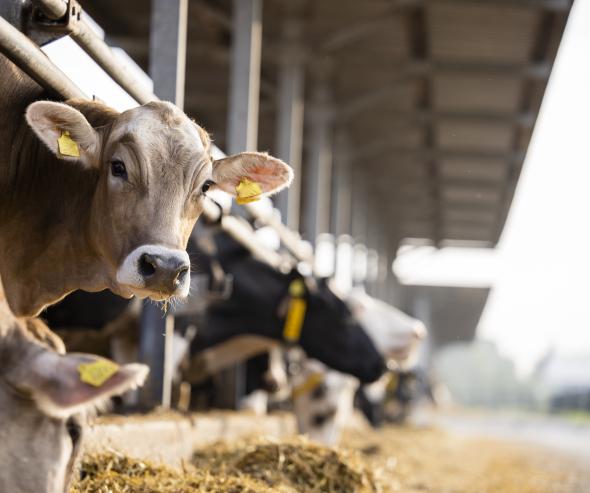Sustainability: the Autorité publishes its first informal guidance in the area of sustainability

Background
The Autorité de la concurrence has today published its first informal guidance in the area of sustainability, provided under the notice adopted on 27 May.
Two professional organisations representing operators in the animal nutrition sector asked the General Rapporteur for informal guidance on a draft guide providing a standardised methodology for calculating products’ environmental footprint.
The General Rapporteur found the professional organisations’ request to be admissible and considered that a draft collective methodology for calculating products’ carbon footprint could be considered a standardisation agreement within the meaning of chapter 9 of the EU Commission guidelines on horizontal agreements.
In the letter sent to the requesters, the General Rapporteur highlighted in particular that exchanges of sensitive information between competitors should be limited, that companies should be able to go further than the collective methodology if they so wish and that a scientifically-sound methodology and individual data are essential.
Origin and content of the request
In February, two professional organisations representing operators in the animal nutrition sector asked the General Rapporteur for informal guidance on a draft guide providing a standardised methodology for calculating products’ environmental footprint.
The draft guide covers the following areas:
- all the steps in the calculation of the carbon footprint of compound feed for livestock, from the production of the ingredients to the delivery of the feed to livestock farms;
- the methodological choices that can be made by manufacturers to calculate their products’ footprint;
- the data to be used to calculate the footprint;
- the third-party verification and validation of the data produced, enabling companies to demonstrate the proper application of the methodological guide.
In the opinion of the Autorité, a project that can be considered a standardisation agreement
The General Rapporteur found the professional organisations’ request to be admissible and the processing of the request to be appropriate, in particular in view of the fact that the Autorité has never assessed the compatibility with competition rules of a standardised methodology for calculating products’ environmental footprint.
The General Rapporteur considered that if the draft guide aiming to provide a standardised methodology for calculating products’ carbon footprint in the animal nutrition sector was adopted under the terms submitted and that if the amendments requested and the observations made in the informal guidance letter were taken into account, there would be no grounds to open an investigation or to ask the Autorité to start proceedings.
More specifically, the General Rapporteur considered that a draft collective methodology for calculating products’ carbon footprint could be considered a standardisation agreement within the meaning of chapter 9 of the EU Commission guidelines on horizontal agreements.
Based on the aforementioned chapter 9, the General Rapporteur highlighted in particular that operators should not exchange any sensitive information beyond what is objectively necessary for and proportionate to the preparation, implementation, adoption and modification of the guide.
A common methodology that should not disincentivise each company from going further
Furthermore, the General Rapporteur indicated that the public, voluntary and non-exclusive nature of the methodology, which leaves room for operators to go further than the recommendations set out in the guide, is an important factor in the competitive analysis. In particular, the General Rapporteur reiterated that companies should not be disincentivised from going further than recommended in the draft guide and that, accordingly, the guide must be clear on the fact that only a standardised calculation of the carbon footprint is proposed and not of the greenhouse gas footprint or the environmental footprint in general.
The need for a scientifically-sound methodology and data
The General Rapporteur indicated that, generally speaking, a methodology and data based on scientifically-sound underlying principles are necessary to ensure that a project for calculating the environmental footprint is compatible with competition rules. If the methodology and data are not scientifically sound, there would be grounds to question whether a sustainability objective was really being pursued and if the project had an impact on product quality. A standardised methodology that resulted in competitors collectively misleading, even unintentionally, their customers on the real environmental impact of their projects would pose a competition risk in cases where the environmental impact is a parameter of competition.
Consequently, the General Rapporteur considers that particular attention should be paid to the methodology design and, in particular, to the principles underlying the calculation methods selected, the scope of the footprint sources assessed and the data used.
To that end, the General Rapporteur alerted the requesters to the need to rapidly shift towards qualitative data specific to each manufacturer (or its suppliers) instead of sector average data, which prevents manufacturers from highlighting their decarbonisation efforts or those of their partners and leveraging those efforts as a competitive advantage.
Furthermore, the General Rapporteur highlighted that the third-party verification planned as part of the guide was a guarantee of quality, insofar as the system ensured that a sustainability objective was really being pursued by the project and that there was no deterioration in the quality of the products supplied as a result of the communication of misleading information under cover of a standardised methodology.
Informal guidance 24-DD-01 of 14 June 2024
Contact(s)
